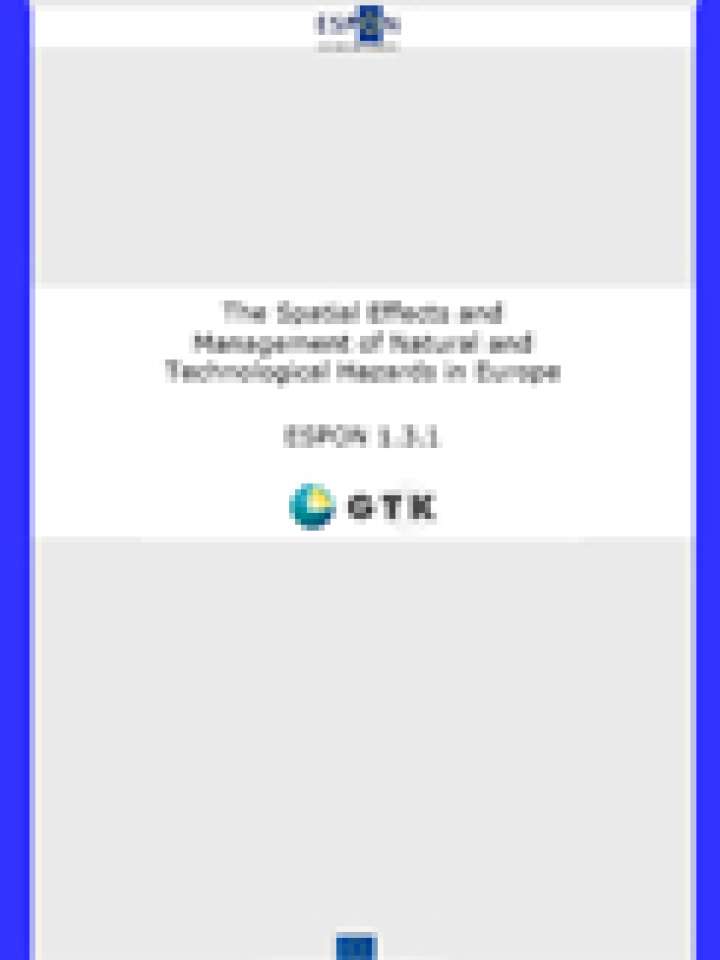The spatial effects and management of natural and technological hazards in Europe
The final report of the ESPON 1.3.1 Hazards project shows the spatial patterns of natural and technological hazards in Europe as an overview on all NUTS3 areas and identifies possible impacts of climate change on selected natural hazards. The approach of the project was to use existing results of hazard research and to combine those in such a way, that the obtained information is comparable over the entire EU 27+2 area. The natural and technological hazards that are relevant for the EU 27+2 area in the ESPON context were selected by specified risk schemes. A so-called spatial filter was applied to ensure that the selected hazards and risks are relevant for spatial planning concerns. For example, floods and major accident hazards have a spatial relevance, meanwhile planning cannot mitigate risks like meteorite impacts or murder.
Regions are exposed to hazards in varying degrees, placing them in different "risk positions". The EU Policy instruments should contribute to even out these differences as a matter of European solidarity. Consequently, risk management should be understood as an important task for the cohesion policy. Overall, better inclusion of risks related to natural and technological hazards in EU policies is needed. The report therefore presents some policy recommendations and a proposal for a handbook for spatial planning and risk assessment.
Explore further
